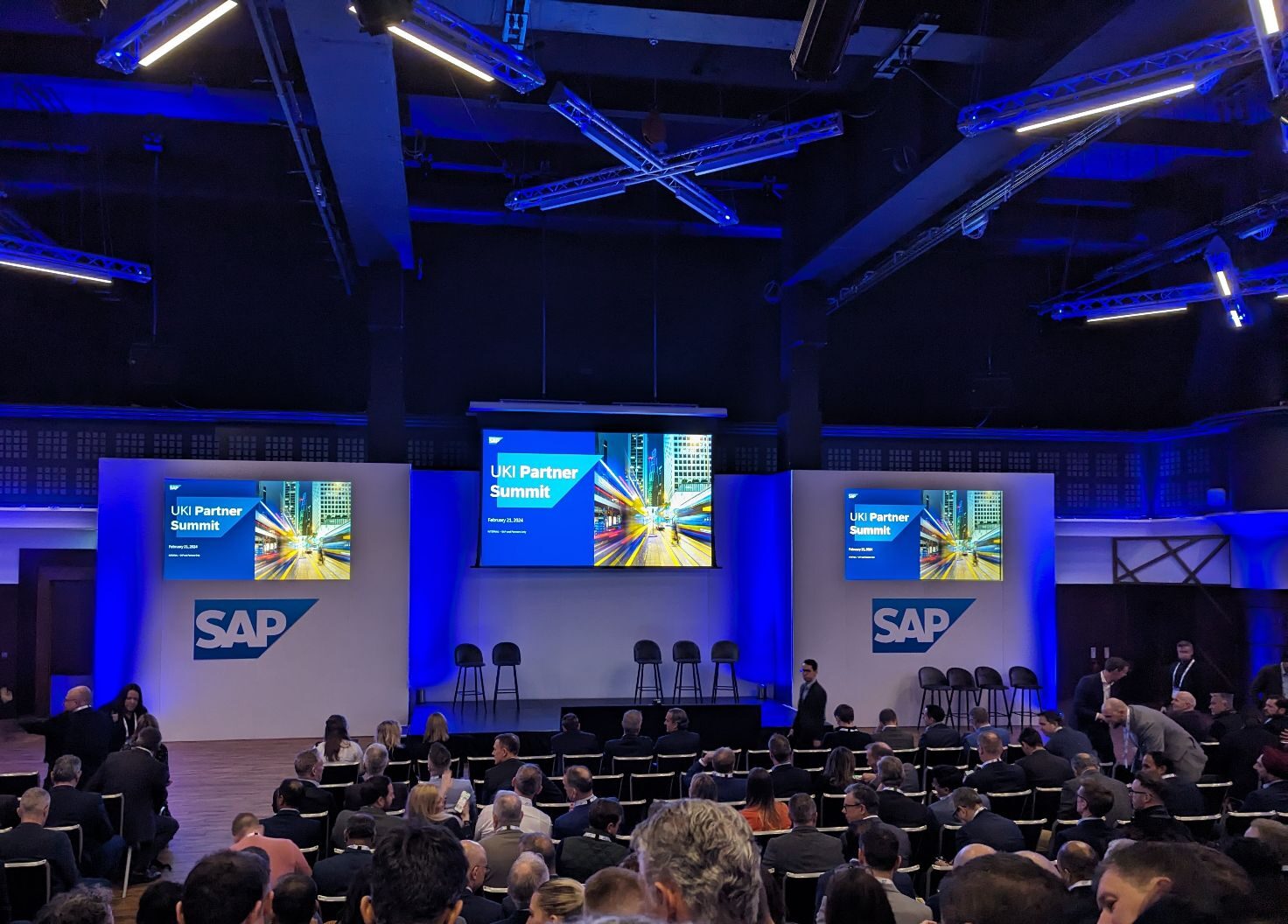ERP Today interviews SAP’s CMSO and its S/4HANA VP at the 2024 SAP Partner Summit to discuss cloud, partnerships and the execs’ roles in keeping up with tech innovations in the era of AI
As cloud computing becomes imperative for unlocking GenAI, utilizing RISE and GROW programs acts as the first step for SAP users on the road to innovation. However, leveraging AI and similar innovations to their full potential is arguably going to be all about partnerships.
At the 2024 SAP Partner Summit in London, Jonathan Rhodes, Global VP S/4HANA Cloud Solution Management, and Eric van Rossum, Chief Marketing and Solutions Officer, spoke about SAP’s commitment to fostering innovation – remaining steadfast that the future starts with cloud tech.
“Certain strategic innovations are going to be cloud-only, predominantly around GenAI and our Green Ledger product,” van Rossum emphasized. “What I think is important to start with is that in SAP’s DNA we support all customers. However – and this is where RISE is important – innovations like GenAI, we feel, are only really possible to be consumed in a cloud environment.”
By providing integrated tools and services, RISE streamlines the transition to cloud-based infrastructures, enabling organizations to modernize their operations and drive efficiency gains.
Complementing RISE is the GROW program, where enterprises can gain the agility to expand their cloud capabilities seamlessly, ensuring that their infrastructure keeps pace with the demands of a dynamic market landscape.
Together, RISE and GROW serve as essential building blocks for organizations looking to harness the power of GenAI and drive innovation across their operations.
Van Rossum further explained: “It’s really important for us at SAP that all our customers, regardless of their install base or even net new customers, are innovation ready and are consuming and agile. RISE and GROW actually serve both those needs. GROW is important to get it out the gate. With RISE we have an offering where we can do that more at their pace. So the outcome is always going to be the same; it’s just a journey of how you get there.”
Users are beginning to recognize that cloud migration is probably inevitable. It is the first hurdle towards successfully accessing advanced AI tools for their ERP systems; however, the journey to the cloud has sparked frustration in the SAP community. The new year debuted the RISE with SAP Migration and Modernization Program, to address the challenges faced by businesses during cloud migration – specifically scope and cost.
By streamlining processes, eliminating custom code, and breaking down data silos, SAP is aiming to build confidence among business leaders to transition even the most intricate ERP systems to the cloud.
“From a product perspective, just as we’ve moved to recurring revenue and embraced a subscription to this constant drumbeat – it’s an opportunity for users to do the same,” added Jonathan Rhodes. “So they see that with SAP, whether GROW or RISE, they can move to a better model and relationship with their customers,” continued SAP’s global S/4HANA VP.
With the ECC 2027 end-of-life fast approaching, users are looking for tools to speed up the migration process. Rhodes explained: “In terms of the tools, they are intrinsic parts of GROW. This Digital Discovery, which is a tool that allows us to scope the customer requirements with detailed best practices, means that when they move into an implementation – we completely automate the configuration. So that makes for a very rapid implementation.”
Rhodes continued: “Depending on how innovative the customer is, they can continually absorb new functionality, which is great for AI because it means we can drop AI on a continuous basis.”
When looking to speed up cloud migration, automation is your speedboat. While it is clear that AI and similar tools cannot be fully utilized without cloud platforms, automation is additionally useful for the migration itself. Rhodes said: “We’re using AI ourselves from a coding perspective, so it’s speeding up SAP’s development which is really fantastic because there are so many things we can do. From a partner perspective, we call it baseline activation. This is a series of RPA bots, allowing the customer to provide a bunch of Excel spreadsheets and the bots will configure the system automatically.”
Van Rossum agreed: “I do think it’s going to speed up. The reason is, for companies to stay ahead and be competitive, staying on an old release is going to be more and more detrimental to them to compete in the market space because if they’re still running ECC and their competitors are able to consume these AI variables – it’s going to affect their effectiveness, their efficiency and their costs. So directly, AI is going to be a competitive advantage.”
Moving to the cloud may be imperative for consuming GenAI and other innovations; however, there is another aspect to innovation success. At the heart of every thriving ecosystem lies collaboration, and for technological innovation, partnerships are the new imperative. At the 2024 SAP Partner Summit, the ERP mega-giant seemed to be embracing this ethos more than ever before.
Van Rossum put it simply: “In this competitive world, our competitors are also our partners.”
While RISE and GROW provide a strong foundation, fully realizing the potential of innovation requires collaboration beyond organizational boundaries. Strategic partnerships play a pivotal role in this regard, offering access to specialized expertise, cutting-edge technologies and diverse perspectives.
By forging partnerships with industry leaders, organizations can accelerate their innovation cycles and rapidly deploy AI-driven solutions to market. These collaborative ecosystems enable seamless integration and interoperability, maximizing the value of cloud investments and driving sustainable growth.
Partnerships offer access to broader networks, by leveraging the strengths of their partners, organizations can enhance their competitive advantage and position themselves as leaders in their respective industries.
Van Rossum explained his thoughts on where partnerships are headed: “I think the role of partners is going to change as well, as ERP almost goes fully into a SaaS paradigm.”
“I believe partners more and more need to invest in IP – like AI scenarios and industry applications that close at the last-mile-type of functionality, that’s going to be where they differentiate in the future.
“We’re going to be heavily depending on them because the power of the ecosystem is so much greater than SAP doing it themselves. SAP has always been an ecosystem growth-led company.”
Rhodes added: “IT is critical as well. Partners need to move away from the idea that the answer is always yes. Move into more of a change management. They should say – I’ll help you manage a change to get an outcome and here’s some differentiating IP rather than just building something custom.”
Partnerships are additionally going to be key to the success of SAP’s commitment to driving innovation in areas such as Green Ledger for anticipating future trends in carbon accounting. As the global focus on sustainability intensifies, businesses are increasingly pressured to account for their carbon footprint and adopt environmentally responsible practices. In this context, SAP’s development of Green Ledger represents a significant leap forward in sustainability accounting, signaling a broader industry shift towards incorporating environmental considerations into financial reporting frameworks.
This was a passion point for van Rossum: “It’s going to be incredibly important as we deliver Green Ledger. The ledger for carbon is going to be equally as important as, say, the ledger for finance. In 5 or 6 years, companies will be auditing and reporting on their carbon accounting. I think that’s a massive innovation which we’ll drive.”
In the future, successfully leveraging and unlocking innovation will be defined by the strength and depth of these partnerships – as they say, a thousand heads are better than one. As organizations look ahead, embracing a culture of collaboration and forging strategic alliances will be essential in navigating the complex technological disruption and realizing the full potential of GenAI for driving sustainable growth and competitive advantage.
Above all, it is clear that SAP wants you to remember it all starts with embracing the power of cloud computing. It is a necessary first step for enterprises looking to unlock new technology, and it’s sometimes a difficult road – but it’s one that charts the path toward a smarter, more connected future.




